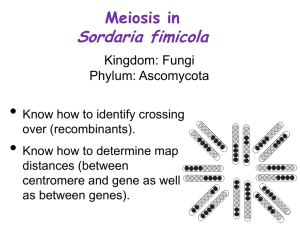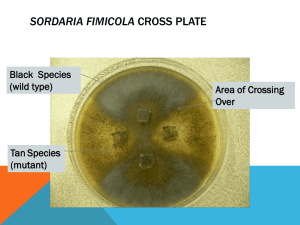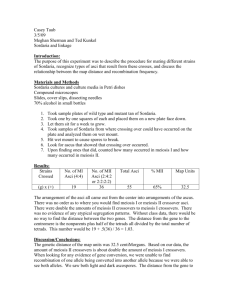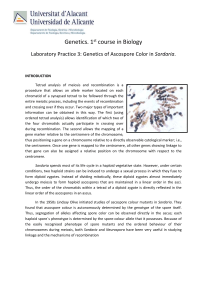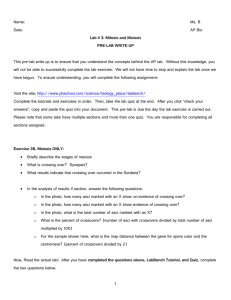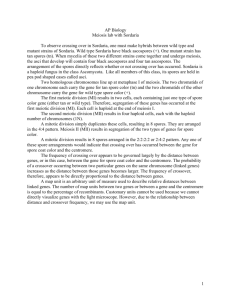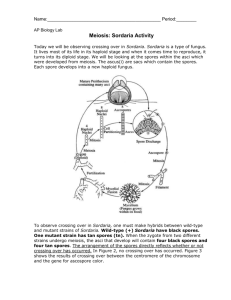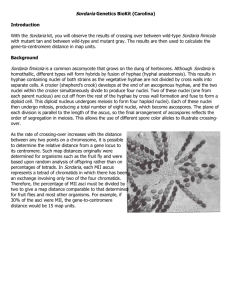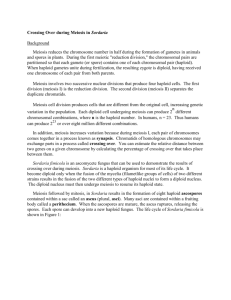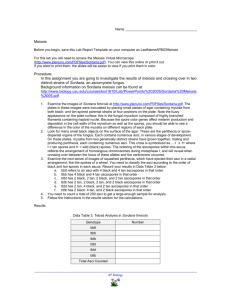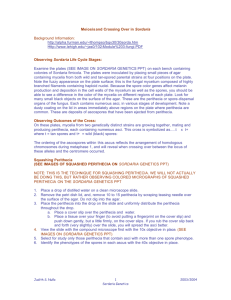Meiosis and Crossing Over in Sordaria
advertisement
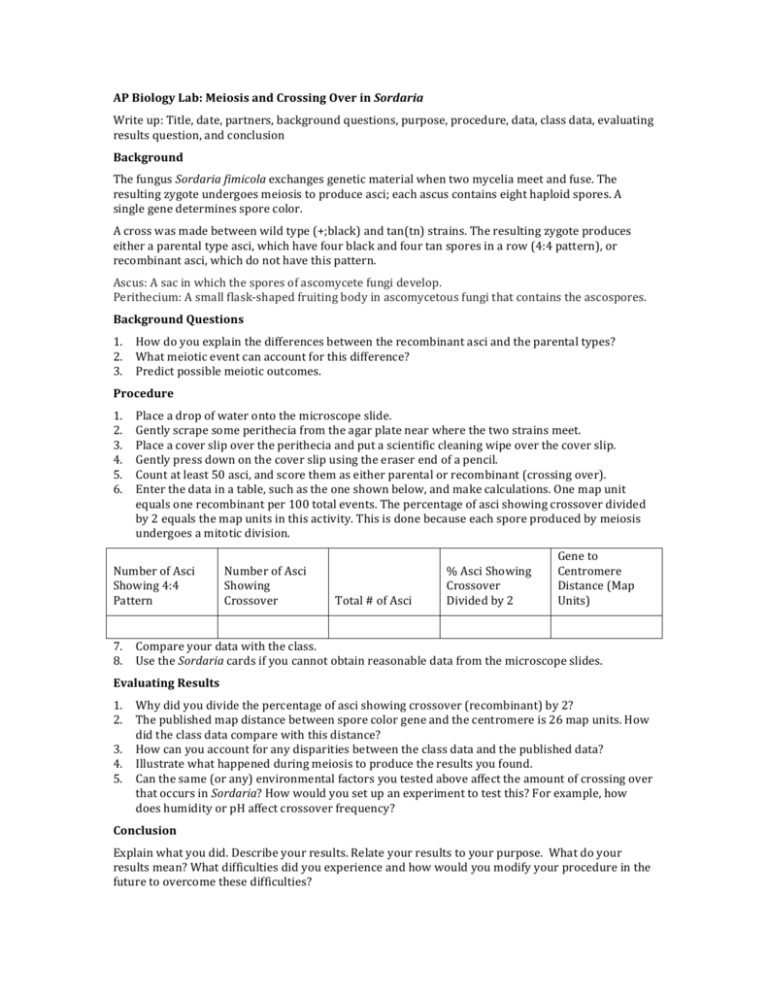
AP Biology Lab: Meiosis and Crossing Over in Sordaria Write up: Title, date, partners, background questions, purpose, procedure, data, class data, evaluating results question, and conclusion Background The fungus Sordaria fimicola exchanges genetic material when two mycelia meet and fuse. The resulting zygote undergoes meiosis to produce asci; each ascus contains eight haploid spores. A single gene determines spore color. A cross was made between wild type (+;black) and tan(tn) strains. The resulting zygote produces either a parental type asci, which have four black and four tan spores in a row (4:4 pattern), or recombinant asci, which do not have this pattern. Ascus: A sac in which the spores of ascomycete fungi develop. Perithecium: A small flask-­‐shaped fruiting body in ascomycetous fungi that contains the ascospores. Background Questions 1. 2. 3. How do you explain the differences between the recombinant asci and the parental types? What meiotic event can account for this difference? Predict possible meiotic outcomes. Procedure 1. 2. 3. 4. 5. 6. Place a drop of water onto the microscope slide. Gently scrape some perithecia from the agar plate near where the two strains meet. Place a cover slip over the perithecia and put a scientific cleaning wipe over the cover slip. Gently press down on the cover slip using the eraser end of a pencil. Count at least 50 asci, and score them as either parental or recombinant (crossing over). Enter the data in a table, such as the one shown below, and make calculations. One map unit equals one recombinant per 100 total events. The percentage of asci showing crossover divided by 2 equals the map units in this activity. This is done because each spore produced by meiosis undergoes a mitotic division. Number of Asci Showing 4:4 Pattern Number of Asci Showing Crossover 7. 8. Total # of Asci % Asci Showing Crossover Divided by 2 Gene to Centromere Distance (Map Units) Compare your data with the class. Use the Sordaria cards if you cannot obtain reasonable data from the microscope slides. Evaluating Results 1. 2. 3. 4. 5. Why did you divide the percentage of asci showing crossover (recombinant) by 2? The published map distance between spore color gene and the centromere is 26 map units. How did the class data compare with this distance? How can you account for any disparities between the class data and the published data? Illustrate what happened during meiosis to produce the results you found. Can the same (or any) environmental factors you tested above affect the amount of crossing over that occurs in Sordaria? How would you set up an experiment to test this? For example, how does humidity or pH affect crossover frequency? Conclusion Explain what you did. Describe your results. Relate your results to your purpose. What do your results mean? What difficulties did you experience and how would you modify your procedure in the future to overcome these difficulties? Diagrams Figure 1. Sordaria Cross Plate Figure 2. Sordaria Life Cycle Figure 3. Sordaria Asci
